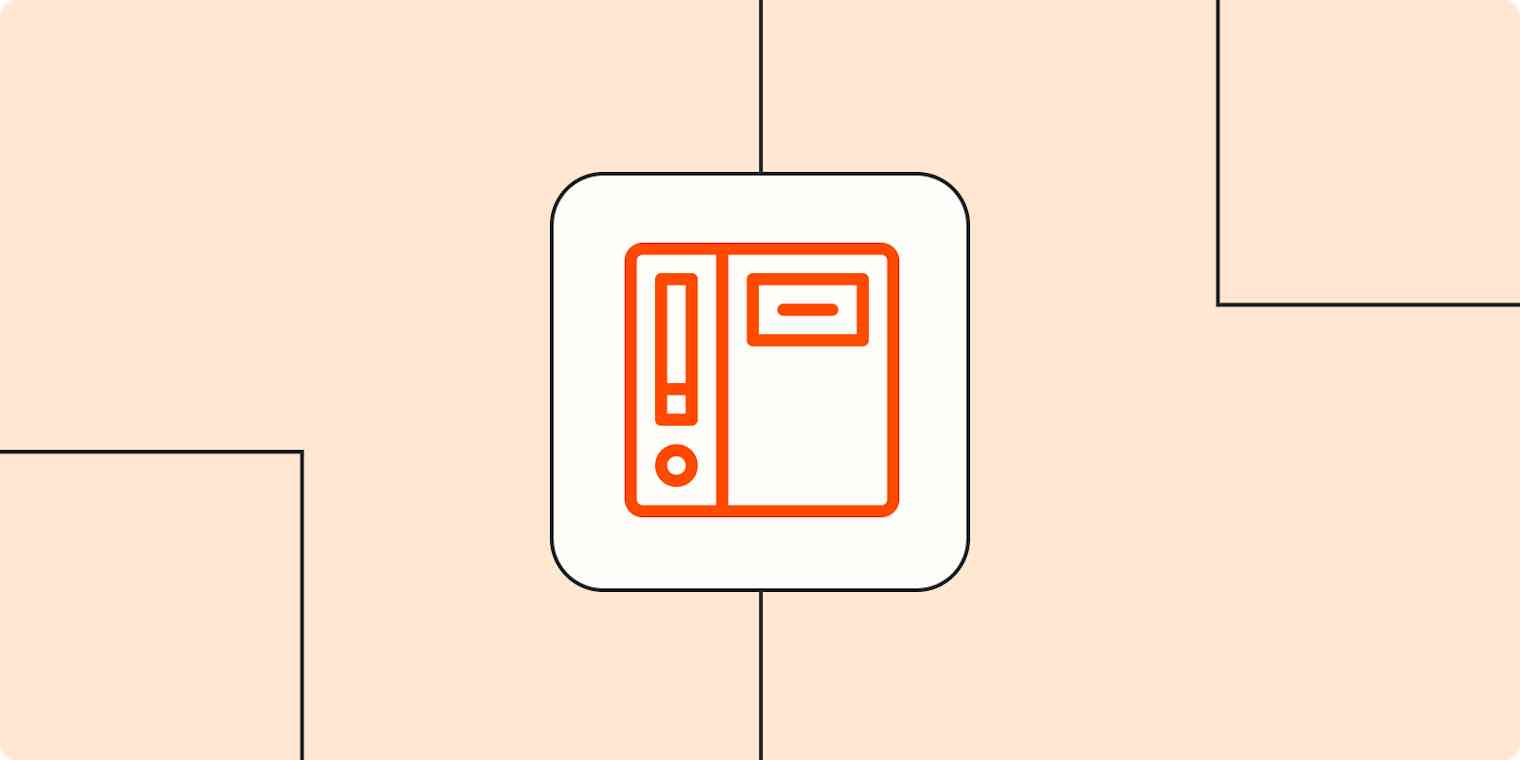Customers have so many options today, so you can't rely on your gut to know if they're happy with your brand. Just like you measure your site traffic or your revenue, you need to measure customer satisfaction. At Zonka Feedback, we spend our days working on a product to help folks do just that, but we also put time into measuring our own customers' experiences with us.
Measuring customer satisfaction has helped us reduce churn, create a powerful brand image, reduce time and money spent on customer support, and create loyalty among our audience.
Here are the metrics we pay the closest attention to when measuring customer satisfaction.
Customer satisfaction metrics: direct measurement
The best place to learn about your customers' experiences is from your customers. You can ask customers directly about their satisfaction levels in a few ways.
Customer satisfaction score (CSAT)
Customer satisfaction score (CSAT) is measured using a customer satisfaction survey that prompts customers to rate their experience after an interaction or purchase. You know the ones: they pop up after you've just done or bought something and ask you how it went.
The survey usually consists of a numerical or emoji-based scale representing a range of experiences from poor to excellent. Based on the responses, the CSAT can fall anywhere between 0% and 100%.
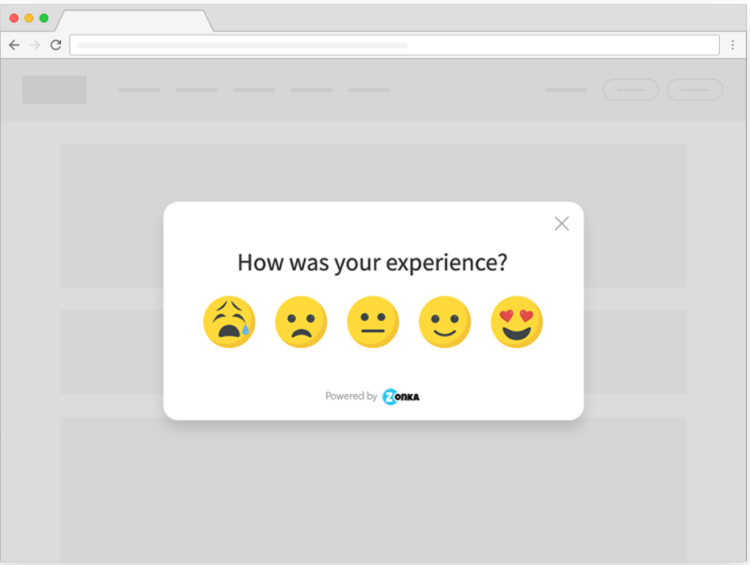
CSAT surveys also allow you to ask customers follow-up questions to understand why they gave you a certain score. The open-ended questions will be unique to your survey, but here are some examples:
What was the reason for the score you gave us?
What can we do better to improve your experience with our brand?
Did you face any challenges while shopping with us? If yes, please share what they were.
What would you like for us to change about our product/service/company?
At Zonka, we use CSAT surveys to improve our onboarding experience. We send out a CSAT survey every time a customer makes a purchase and every time we roll out a new feature or software update. The post-purchase surveys help us customize solutions, so customers can see tangible results right from the beginning. We embed the surveys directly in the email body, which increases the response rate.
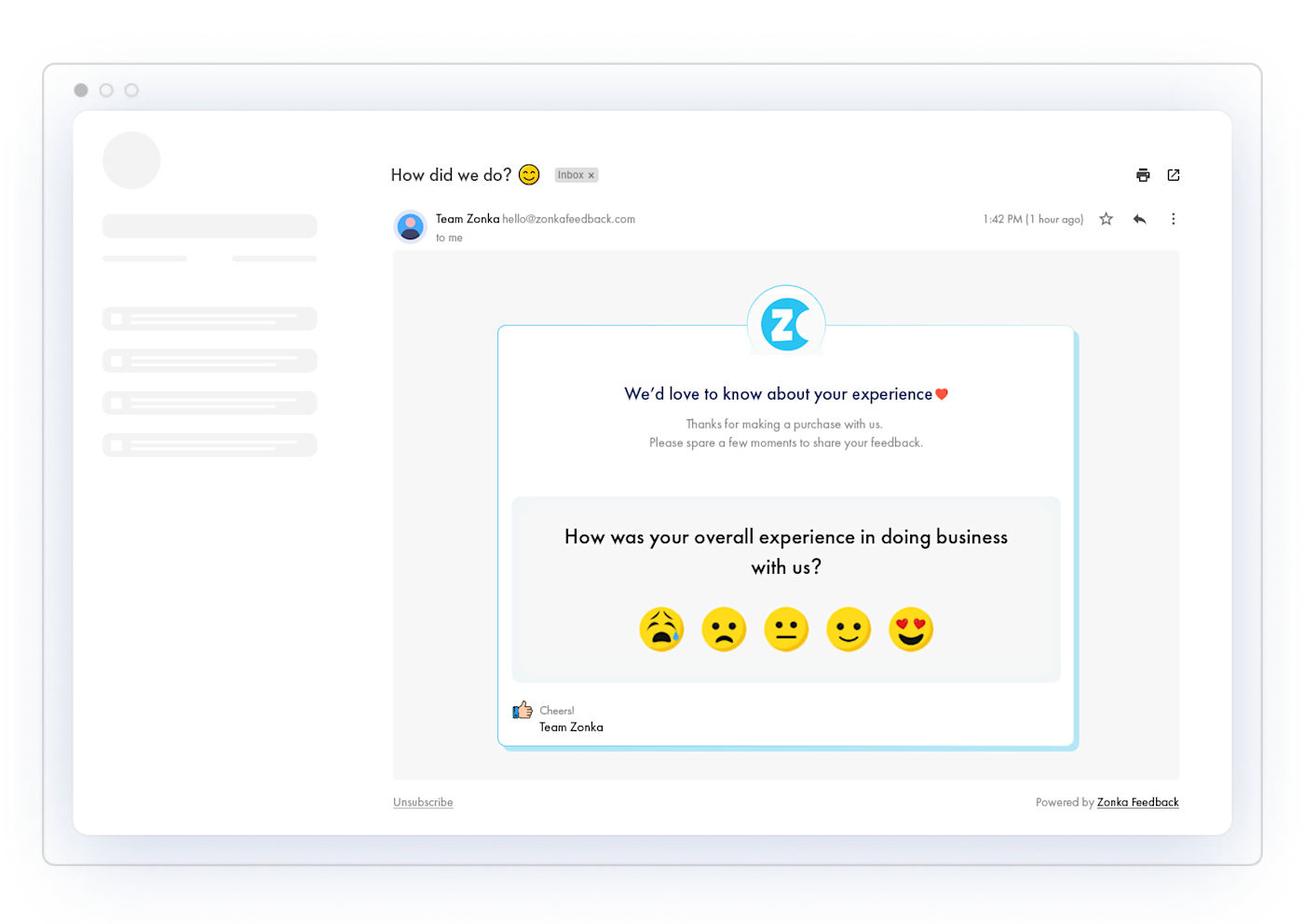
Net Promoter Score (NPS)
Net Promoter Score (NPS) is a widely-used customer satisfaction metric that gauges customers' loyalty to the brand. It basically tells you if customers would be willing to recommend you to other people.
Customers who give a score of 9 or 10 are called promoters. They're very loyal to the company and would recommend it to others.
Customers who give a score of 7 or 8 are called passives. They're not unconditionally loyal to the brand and may switch if given a better choice.
Customers who give scores of 0-6 are detractors. They have no loyalty to the company and may even badmouth it.
This is what an NPS question looks like:
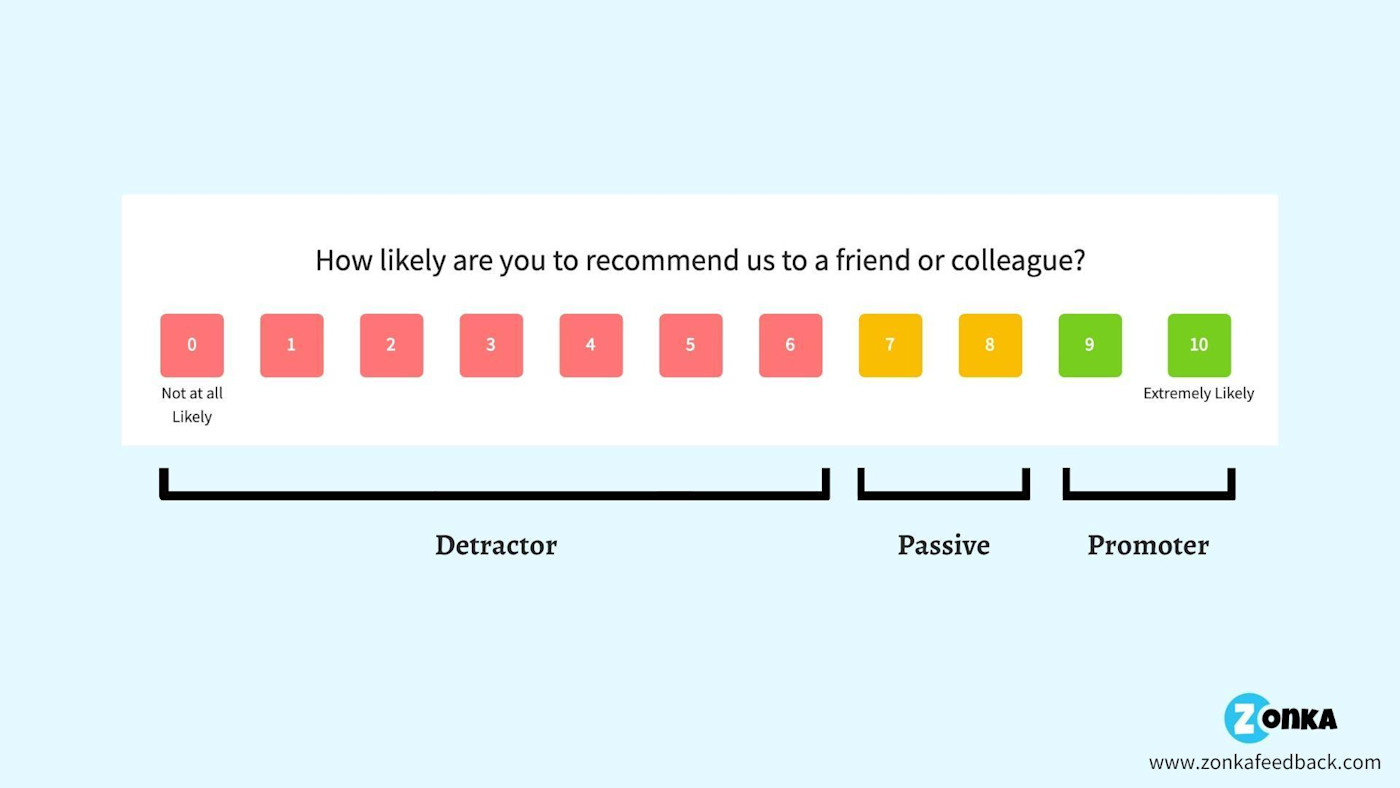
NPS is usually used to understand customers' loyalty to the brand as a whole, but it can also be used to measure satisfaction with a particular experience or service. Depending on what you're measuring, you might change the question a bit—here are some examples:
On a scale of 0-10, how likely are you to recommend our brand to others based on the customer service support you just received?
Based on your experience with [product name], please rate your likelihood of recommending our product/business to others, on a scale of 0 to 10.
Following our latest software update, how likely are you to recommend our business to others, on a scale of 0 to 10?
How likely are you to use our referral program and recommend our business to others, on a scale of 0 to 10?
Just like in CSAT surveys, you can add open-ended questions in your NPS survey to understand why customers answer the way they do—that's what will allow you to make changes.
At Zonka, we send out NPS surveys two months after a client is onboarded with us.
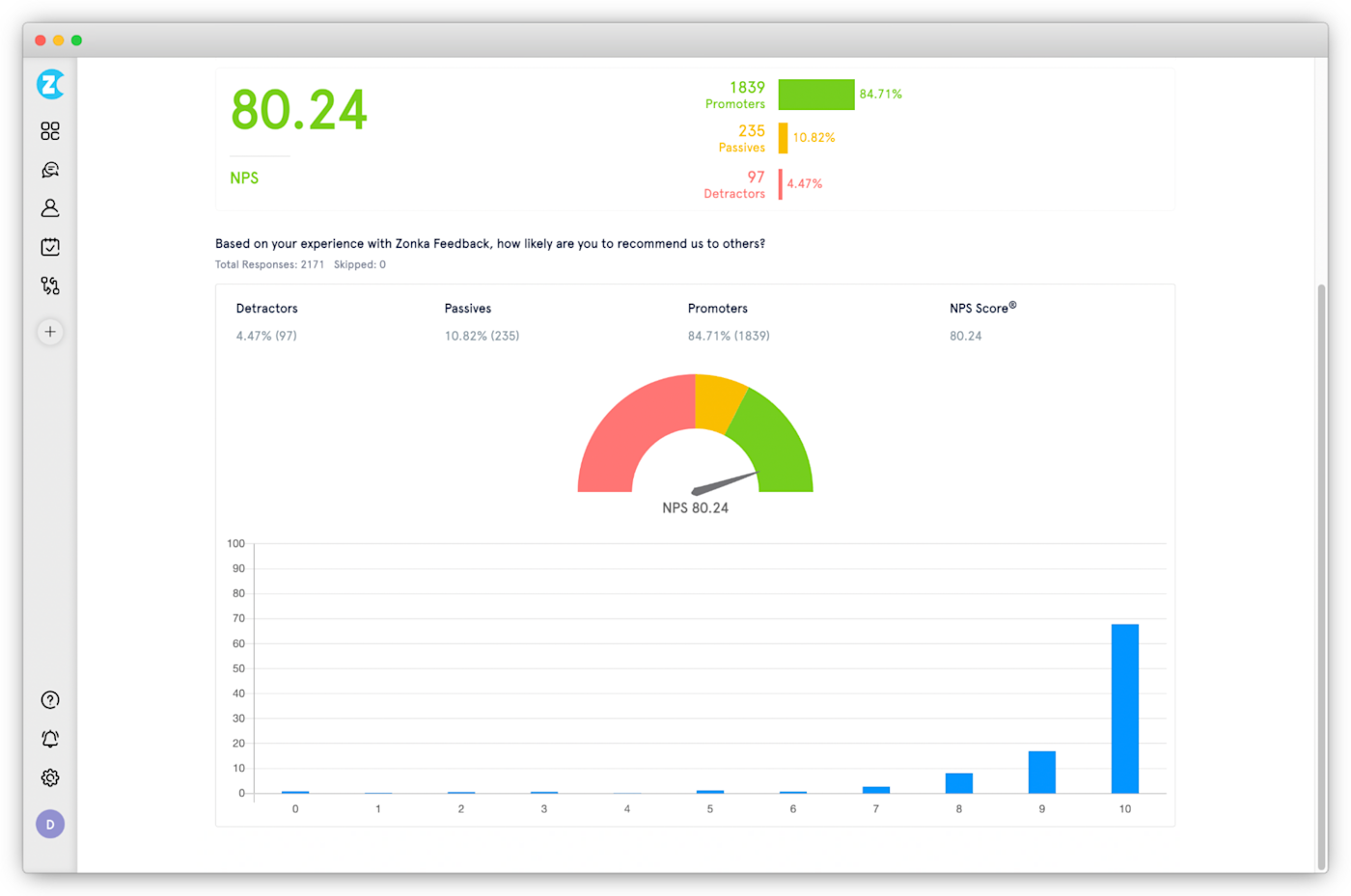
To understand the reasoning behind the score, we added a follow-up question, asking folks about the challenges they faced while using Zonka.
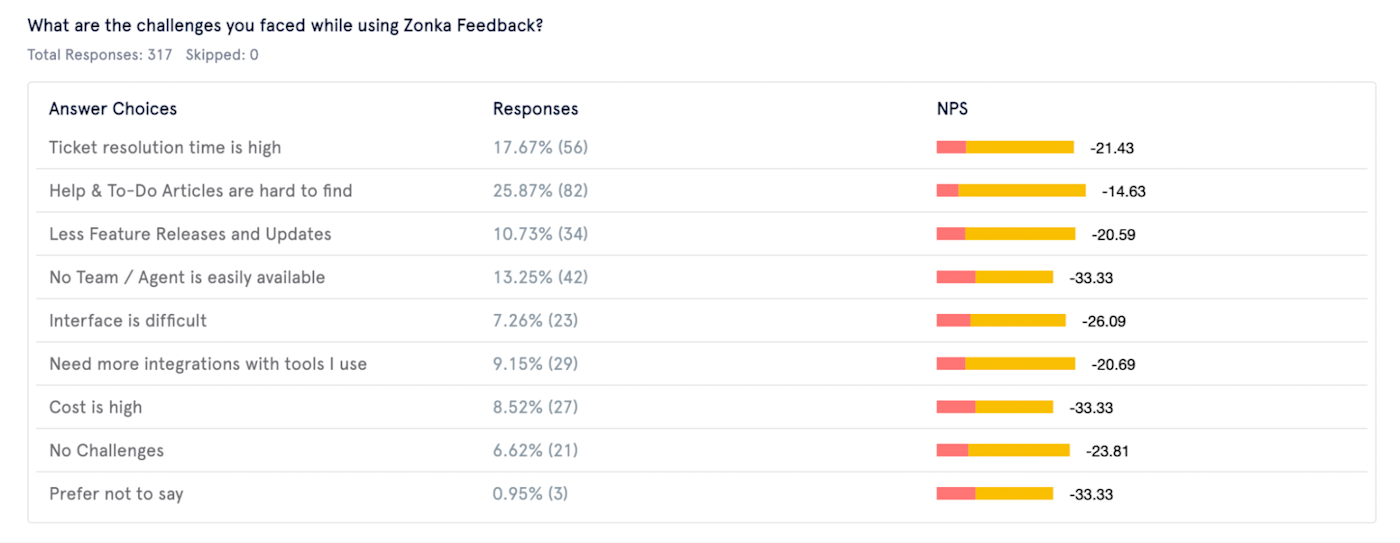
As you can see in the report above, the top five reasons our detractors and passives gave for a low NPS were:
Difficulty in finding help & to-do articles
Lengthy ticket resolution time
Support team or agents not being easily available
The desire for more feature releases and updates
The need for integration with more tools
Based on these responses, we took action:
We revised the help section, adding more articles and inserting shortcuts to the help articles on the feature page to make the information more accessible.
We introduced in-product chat support through Intercom to increase ticket resolution speed.
We added more people to our customer success team to make support available around the clock.
We added a feature update alert to the app that notified users every time a new feature was released.
We invested in launching deep integrations with leading CRMs like HubSpot, customer service tools like Intercom, automation tools like Zapier, customer ticketing tools like Zendesk, and productivity tools like Slack, Google Sheets and Microsoft Teams.
All that because of one simple survey.
Customer effort score (CES)
Customer effort score measures the effort that customers put into doing business with a company. It's calculated using CES survey data, which asks how easy or difficult it was for customers to accomplish a certain goal with the brand (e.g., getting an issue resolved, returning or replacing a product, seeking support from the customer service team).
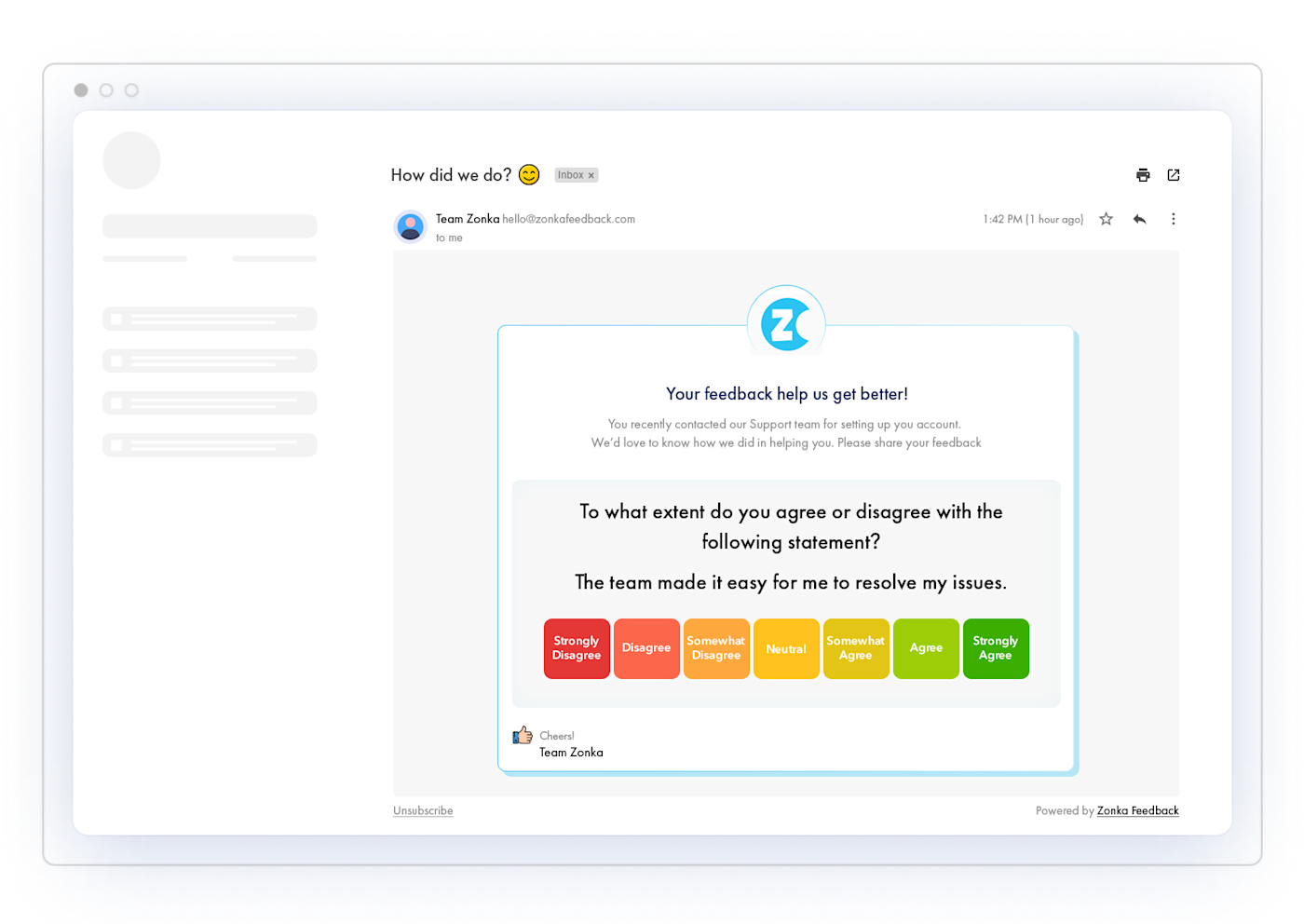
After any kind of customer service interaction with a customer, we send a CES survey. We also use CES surveys to measure customers' satisfaction with each agent, so that our customer service team can improve their performance and we can continue to offer excellent customer support.
Customer satisfaction metrics: indirect measurement
Assuming how a customer feels about something isn't great, but when you combine it with direct measurement, indirect measurement based on data can help you fill in the gaps. Here are the indirect customer satisfaction metrics that you can leverage to get a sense of where things stand.
Customer churn rate (CCR)
If people don't like your brand, they'll likely do one of two things: (1) complain about it vocally or (2) just…leave. Customers who go the second route—which leads to what's called customer churn—can tell you a lot about customer satisfaction levels. It can also help you figure out how to reduce that churn.
To calculate your customer churn rate:
Define the period for which you wish to calculate churn (e.g., six months or one year).
Subtract the number of customers at the end of this period from the number of customers at the beginning of this period.
Divide the result by the number of customers at the beginning of the calculation period.
Customer health score (CHS)
Your customer health score is an indicator of whether customers will stay with your brand over time. Unlike the direct customer satisfaction metrics, CHS helps identify behavior patterns over a fixed period, determined by things like:
Product usage period
Money spent with the brand
Number of customer support interactions
Willingness to answer your surveys
These parameters will vary from company to company, but the goal is the same: classify customers into weak, at-risk, and healthy. You can then identify patterns among certain types of customers and nurture them appropriately.
Customer lifetime value (CLTV)
Customer lifetime value is the revenue that your business generates from a customer over the anticipated lifespan of the customer relationship. Here's what you'll need to do to calculate CLTV:
Calculate the average purchase value over a year (total $ spent divided by number of purchases).
Calculate the purchase frequency over a year (total number of purchases divided by total number of customers who purchased).
Multiply those two numbers together to get the average customer value per year.
Determine the average customer lifespan.
Multiply the average customer lifespan by the average customer value per year.
Measure customer satisfaction with the right tools
Indirect customer satisfaction measurement lets you know when something's going wrong, and direct measurement helps you figure out exactly what can be improved. Using both strategies in tandem will help you understand your customers better and make changes to increase customer satisfaction.
If you're just getting started with customer satisfaction surveys, here are some final tips:
Use survey automation to collect a large quantity of feedback at different intervals in the customer journey.
Integrate your surveys with your customer service and ticketing tools to collect feedback during customer support interactions.
Use survey branding to make your surveys brand-specific.
Personalize your surveys to improve the feedback-sharing experience.
Use survey logic to make surveys more relevant based on different customer experiences.
Leverage multi-channel feedback to make sure you don't miss out on critical feedback.
This was a guest post from Kaumudi Tiwari, the Digital Marketing Lead at Zonka Feedback. Want to see your work on the Zapier blog? Read our guidelines, and get in touch.
